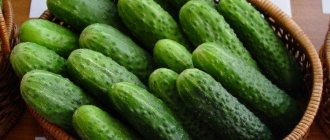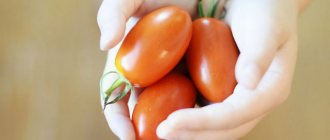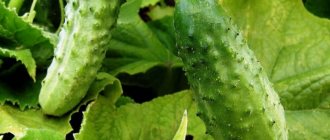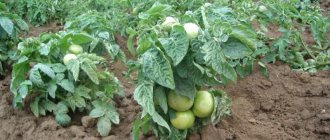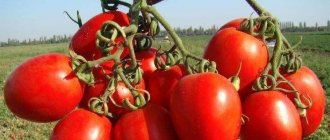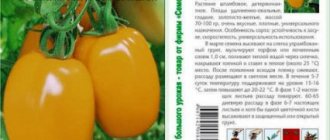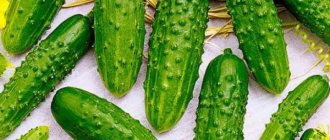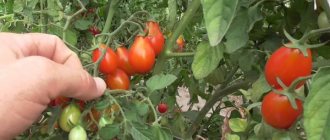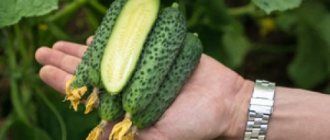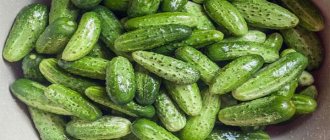General characteristics of cold-resistant and shade-tolerant varieties
Not all types of cucumbers are highly resistant to low temperatures and cold atmospheric conditions. In regions characterized by short and cold summers, it is recommended to use cold-resistant vegetable seeds for sowing. Cold resistance does not imply the frost resistance of a crop, but its adaptability to low temperatures. For cucumbers, the minimum temperature is 2-3 degrees. Plant death occurs at low rates.
Attention! If the packaging describing cold-resistant varieties says frost resistance, then this is just a marketing ploy.
Vegetables grown from shade-tolerant varieties easily tolerate a lack of sunlight and lighting. But this does not mean that they need to be grown in an area where the sun is a rare guest. This culture will grow well in a place with short shading. For planting, it is better to choose a place where the sun appears in the evening. Shade-tolerant crops can be early-ripening, mid-ripening, late-ripening. Therefore, the ripening time of different varieties is not the same. For example, early-ripening cucumbers ripen in 35 days, mid-ripening - in 45, late-ripening - in 55.
How are they different?
Parthenocarpic varieties are more suitable for greenhouse conditions. They do not need pollination by insects and subtly respond to climatic conditions. They do not tolerate sudden temperature fluctuations, waterlogging or drought. Of course, they can be cultivated in natural conditions, but we must remember that they are not very resistant to any climate, and the harvest will be meager.
Bee-pollinated ones, as you already understood, are grown not in greenhouses, but in the ground. The formation of the ovary in such varieties is impossible without pollination by insects. Mainly they include hybrids.
Attention! Remember that it is prohibited to plant varieties with different types of flowering on a plot next to each other. Otherwise, parthenocarpic plants will also be pollinated, as a result of which the ovaries and flowers will have an irregular shape. This will have a negative impact on productivity in the future.
Growing regions
There are no clear regional restrictions for cultivation. Cold-resistant cucumber varieties can be cultivated in various regions.
May be interesting Cucumber variety Graceful: growing, planting and care, photo What to do to prevent cucumbers from growing hollow: prevention Net for cucumbers: installation, use
Unpretentiousness in care, adaptability to any vagaries of nature, excellent taste of fruits make hybrids in demand among most gardeners. But agronomists recommend using such varieties in regions of Russia where unfavorable and unstable weather conditions are observed.
These include:
- Siberia, Ural;
- northern and northwestern territories;
- the middle zone of the European part of Russia;
- upper, middle Volga region.
Early ripening vegetables are best grown in regions with short and cold summers.
Attitude to light
In addition to the above-mentioned characteristics, cucumbers, or rather their types, are, in relation to their reaction to light, light-loving and shade-loving. It’s the latter that we’re talking about today. If everything is clear with the first ones (they are planted in spring and summer and away from the canopy of trees), then it’s worth talking about the shade-loving ones in more detail, because they are more demanding on soil quality and climate.
Shade-loving cucumbers should be planted as late as possible, when the influence of sunlight on the shoots is not so destructive. And, of course, you need to carefully select the place for the garden bed: it should be located in the shade. For example, under the canopy of trees, near a fence, etc.
Benefits of growing
The advantages of cold-resistant varieties include the following characteristics:
- continued growth and development of the culture when the temperature drops;
- long period of abundant fruiting (for certain varieties);
- cucumber formation is often not required;
- high yield;
- excellent characteristics of the fruit (taste, aroma, thin skin);
- the ability to use fruits for canning and pickling;
- resistance to insect pests and diseases;
- growing in closed or open ground.
With proper care and timely application of fertilizers, the yield will be even higher.
Attention!
Cold-resistant hybrids do not have any significant disadvantages or non-specific care requirements.
Cucumbers resistant to low temperatures do not require special care. It is important to follow the following simple rules to protect plantings from frost:
- Surface soil covering with mulch. It is during the cold period that the soil is very susceptible to the “invasion” of pathogenic microorganisms that cause dangerous diseases.
- Sprinkling or aerosol irrigation. This method of watering is carried out when there is a threat of frost. 1 m² will require 7-10 liters of water.
- Smoke from plantings. You can mitigate the effects of cold air by lighting a fire, creating a smoke screen. Any slightly damp material (straw, garden waste, tops) should be used as fuel. Such a fire will slowly smolder.
- Covering seedlings with a film frame. Building such a mini-greenhouse is quick and easy. An important condition when using this method is that the protective covering material should not touch the leaves of the plantings.
- Planting tall plants around cucumbers. You can reduce the effect of low temperatures on crops by planting tall plants between the beds in advance.
- Use of stimulants and growth regulators. In order for the culture to continue to grow actively, you need to use special means. Such drugs will help increase productivity.
By adhering to these rules, you can support and help the vegetable easily survive the cold period.
Description of popular varieties of cold-resistant cucumbers
Rating of the best varieties of cold-resistant cucumbers for open ground:
- Amur. This early-ripening hybrid is recommended for growing on private estates and small farms. The plant forms very weak branching, which makes it possible not to use shaping (pinching). Length 12-15 cm, weight – 90-110 g. The disadvantage of the variety is the short fruiting period (no more than 30 days). Cucumbers are picked every 2-3 days. Overripe fruits lose their good taste.
- Eskimo. Bee-pollinated variety. Even at low temperatures (5-7 degrees), the growing season does not stop. The fruits are cylindrical in shape with a thick peel, weighing up to 120 g. Cucumbers are suitable for salads, pickling, and canning.
- General's. The hybrid is early ripening, the bush grows tall and powerful. The variety is characterized by a large number of ovaries, in one bunch their number can reach up to 12. Zelentsy are very beautiful, reaching a length of 11 cm. From 1 m² you can harvest up to 40 kg of crop.
- Lapland. The first harvest ripens about a month after the first shoots appear. Wattles of medium length. Zelenets are 8-9 cm long, beautifully shaped. Ripe cucumbers are well suited for pickling in barrels. The advantage of the variety is the intensive formation of ovaries before autumn frosts.
- Lord. Lord (F1) cucumbers of the first generation belong to mid-season hybrids. An unpretentious crop is chosen for growing in outdoor beds and in film greenhouses. It has strong immunity to diseases. The first harvest can be harvested in August or early September. The bright green fruits with white spines are of high quality and excellent taste. Cucumbers are suitable for fresh consumption and canning.
- Snowstorm. This early type of vegetable does not require pollination. After 38-40 days you can harvest the first harvest. The small plant is characterized by poorly developed side shoots. There are up to 5 ovaries in one bunch. Cucumbers are small, only 6-8 cm in length and weighing 60-70 g. When they outgrow, they begin to grow in width. The disadvantage is the formation of voids in the fruit.
- Blizzard. An early-ripening hybrid with short wattles, producing the first harvest in 35-37 days. Dark green cucumbers are small (8 cm in length, weight - 70 g) with bright green stripes on the peel, which is covered with large pimples. Taste without bitterness.
- Eliseevsky. The plant is pollinated by bees. Mid-season variety, the first fruits ripen in 55-60 days. The highly lumpy fruits are juicy and tasty, ranging in size from 10 to 15 cm. Suitable for preservation.
- Dolomite. This early maturing hybrid was created by Dutch breeders. The bushes have few branches. The fruits are smooth, small-lumpy. The pulp is dense without bitterness. Does not lose its crunchy qualities after processing.
- Cucumber Bully (F1). Mid-season variety, first harvest in 40-45 days. Each bunched ovary produces 4-5 cucumbers. The fruit is 6-8 cm long with a dark green peel with whitish stripes. The fruiting period is long (until the first frost).
- Danila. Cucumber Danila is distinguished by intensive fruiting and the simultaneous formation of a large number of greens. The first harvest can be harvested in 35-40 days.
- Mill (F1). A high-yielding hybrid suitable for growing in greenhouses and open ground. The plant has average branching, the fruits with spines are 15-18 cm long.
Cucumber By Pike (F1), Tundra, Ant, Suomi, Sultan, Cheetah are hybrids that are also resistant to low temperatures.
The above-ground part of the plant: choosing a shade-loving variety based on this characteristic
This sign is very important to take into account, because fruiting depends on it.
There are such types of cucumbers, depending on the characteristics of the development of their shoots, as:
- Bush;
- Short-climbing;
- Medium-climbing;
- Long-climbing.
The last type - long-climbing - develops longer than others and, accordingly, its fruiting period is also the longest. In bush plants, on the contrary, this period is the shortest.
When choosing a variety or hybrid based on this characteristic, it is important to understand what exactly you want: to get a quick result with the least amount of effort in caring for the shoots and material resources, or to spend maximum resources and in the long term get an excellent result in the form of a rich harvest.
In addition, one or another variety of cucumbers is classified as different species based on characteristics such as the branching characteristics of the side shoots. It can be active when side shoots grow from each stem.
By the way, varieties with such branching of side shoots are more often than others planted in open ground, because shoots can be freely located on the ground and actively develop.
There are also varieties of cucumbers with short branches of side shoots (the so-called limited branching), which are more suitable for greenhouses, because they are more delicate and prone to diseases (powdery mildew, etc.).
Description of shade-tolerant varieties
Popular varieties of shade-tolerant cucumbers for open ground:
- Muromsky 36. Early ripening hybrid, fruits ripen 35-37 days after the appearance of the first shoots. The length of the fruit is 8 cm, weight - 50-70 g. The disadvantage of the variety is that cucumbers can quickly overripe and turn yellow. The vegetable has a universal purpose.
- Arbat (F1). Bushes with numerous branches, so a strong garter will be required. After the appearance of the first shoots, fruiting occurs on the 45-50th day. Arbat cucumber has an elongated cylindrical shape, 19-20 cm long, weighing 200 g.
- Balalaika (F1). Gherkin hybrid for growing in greenhouses and open ground. It is characterized by early maturity and high yield even under unfavorable conditions. The bushes are small with inactive branching (no shaping required). The length of the greens is 7-9 cm, weight – 80-100 g. The hybrid is resistant to diseases. Balalaika cucumbers with good taste.
- Moscow Nights. A medium-ripening hybrid, i.e. the fruits ripen in 45-50 days. The length of cucumbers is 13-15 cm, weight - up to 100 g. The purpose of the vegetable is universal.
- Chistye Prudy. The branching of the plant is moderate, the first cucumbers appear after 45 days. Zelenets is 12-14 cm long, weighing 110 g. It has excellent taste, which allows it to be used universally.
- Master. The early maturity of the hybrid is medium-early (45-55 days). Zelenets has a dark green color and pronounced tuberosity. Fruit length – from 13 to 15 cm, weight – 120 g.
- Green wave. The hybrid is early ripening, bunched, gherkin. The plant is pollinated by bees. The first fruits appear after 40 days. Zelentsy have a bright green color. The vegetable is 10-12 cm long, weighing 110 g. The hybrid is very resistant to many diseases.
- Cheboksary. The Cheboksary cucumber is an early hybrid that tolerates the absence of sun well. You can get the first harvest 35 days after planting. The fruits grow up to 15 cm in length.
Attention!
Fruits must be picked on time. Otherwise, the skin of the vegetable becomes rough and the taste deteriorates.
Cold-resistant and shade-tolerant varieties of cucumbers are suitable for cultivation in most regions of the country. Compliance with agricultural cultivation techniques will allow you to harvest cucumbers before the first autumn frosts. Hybrids are universal, i.e. They can be consumed both fresh and used for various winter preparations.
How to choose
In addition to ripening time and yield, when choosing, pay attention to pollination criteria. There are self-pollinating and bee-pollinated plants.
Self-pollinating
Such varieties and hybrids contain pistil and stamens in one flower.
The pollination process occurs independently, without the intervention of insects. This is convenient in a greenhouse; there is no need to manually pollinate the cucumbers. It is recommended to pay attention to the following hybrids:
- April f1;
- Dynamite f1;
- Moscow evenings f1;
- Garland f1;
- Master f1.
Bee pollinated
Cucumbers set after insects pollinate the plant. These fruits have a pleasant aroma and sweet taste. Bee-pollinated cucumbers are grown in the shade in all regions of the country. Pollinating insects are bees or bumblebees.
Most Popular:
- True friends f1;
- Hector f1;
- Children on branch f1;
- Kumanek f1;
- Brownie f1.
Beams
In such cucumbers, the ovaries are arranged in bunches. Bundle plants can be bee-pollinated or self-pollinated. Thanks to the bunches, the yield increases several times. The stem of the bushes reaches 2 m, the fruits are compact.
The best bunched cucumbers:
- Bun splendor f1;
- Prestige f1;
- Ginga f1;
- Alligator f1;
- Okhotny Ryad f1.

